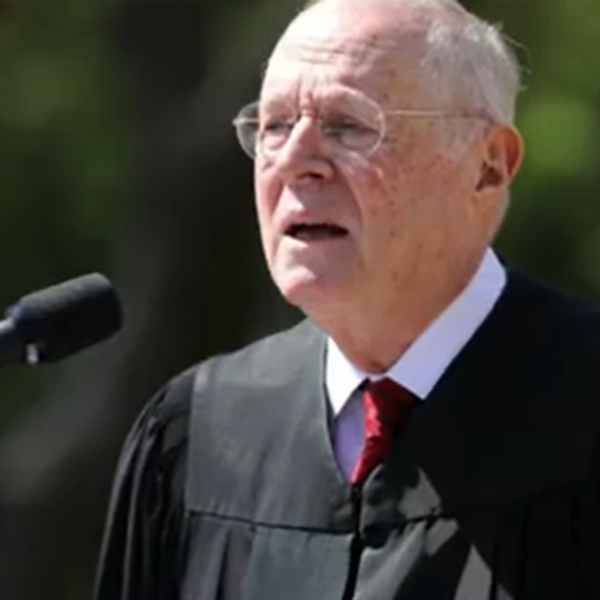The Federal Reserve sent a warning shot that housing is the greatest threat to the economy. The government should take note.
As we start the New Year, the executive branch and Congress continue to pretend the gravest risk to our economy and social stability does not exist: the ongoing foreclosure crisis. The financial crisis began with the housing crisis and it will not end until we resolve housing. Government policymakers who seemingly ignore this basic fact are leading the nation to another potential catastrophe.
This past week, a number of important events occurred in Washington, including important recess appointments by President Obama. However, the most noteworthy event did not make front page news: the Federal Reserve’s (apparently) unsolicited memo to the committees of Congress that oversee financial services warning of the dangers the current housing market poses for the economy.
This represents an extraordinary action and underscores both the seriousness of the continuing crisis and the absence of meaningful discussion of the problem in Washington. Bernanke’s memo reviewed federal actions to date and effectively concluded that they were unlikely to solve this national tragedy. The memo concluded, in part:
The challenges faced by the U.S. housing market today reflect, in part…a persistent excess supply of homes on the market; and losses arising from an often costly and inefficient foreclosure process (and from problems in the current servicing model more generally)… Absent any policies to help bridge this gap, the adjustment process will take longer…pushing house prices lower and thereby prolonging the downward pressure on the wealth of current homeowners and the resultant drag on the economy at large.
This memo is notable for several reasons. First, it’s important to remember that when the Fed speaks, it does so in sober, limited terms. So an unprompted Fed warning suggesting “a persistent excess of supply” and a “resultant drag on the economy” is comparable to the Secretary of Homeland Security holding a press conference to warn of the risk of an imminent national emergency. Second, an unprompted memo from Bernanke to the House means that he is so deeply worried he felt the need to speak out in as strong a voice as his position permits. Third, the Fed rarely speaks on issues unrelated to its direct activities. Indeed, The Wall Street Journal subsequently wrote, “For an institution that jealously guards its independence, the Federal Reserve is wading into treacherous political waters.”
Finally, co-ordinated speeches by three top Fed officials further indicate the depth of the Fed’s concerns. On Friday, the presidents of the New York and Boston Fed banks and Betsy Duke, a Fed Governor, all gave speeches detailing the need for aggressive action to spur a housing recovery. For example, William Dudley, President of the New York Fed, told a group, “The ongoing weakness in housing has made it more difficult to achieve a vigorous economic recovery.”
There are a multitude of other indicators that our current treatment of the housing sector will at minimum prevent an economic recovery and at worst have disastrous consequences for the stability of the financial sector as well as the health of the middle class. (For the record, my analysis leans toward the latter of these two viewpoints.) These include the reportedly poor health of our financial institutions (zombie banks), the administration’s seeming efforts to cover this fact up, and the inevitable failure of federal homeowner assistance programs that rely on the cooperation of financial institutions whose profit incentives are in the reverse direction.
Consumer spending represents 70 percent of the nation’s economy and is central to any economic recovery. To achieve sufficient aggregate demand (i.e. total spending on goods and services), this will require spending by middle-income individuals in addition to what we now call the 1%. The Fed report suggests that the housing crisis makes such a recovery unlikely.
The report found that, in the aggregate, more than $7 trillion in home equity — more than half of the aggregate home equity that existed in early 2006 — has now been lost, noting, “This substantial blow to household wealth has significantly weakened household spending and consumer confidence.” Moreover, “Middle-income households, as a group, have been particularly hard hit hit because home equity is a larger share of their wealth in the aggregate than it is for low-income households (who are less likely to be homeowners) or upper-income households (who own other forms of wealth such as financial assets and businesses).” These households have seen their home equity decline by an estimated 66 percent.
Moreover, the fear of a continuing loss of wealth (which is a cushion against job loss or other economic emergencies), the fear of job loss itself, the negative effects of underwater homes, lack of forbearance for unemployment (a point the Fed particularly emphasizes), and consumers struggling to meet mortgage payments in a far more difficult environment are all dragging the economy down.
There is also a far worse possibility. Today, an estimated 29 percent of all homes with mortgages are underwater. In addition, at least one respected analyst estimates that a total of 14 million homes will be foreclosed on from 2007 to the end of the crisis. This represents a hard-to-imagine one in every four mortgages. With foreclosures increasing, there is now such a looming imbalance of supply and demand that, as the Fed notes, further decreases in home prices are likely. Some believe home price reductions of another 20 percent are likely. This would, in all likelihood, have disastrous consequences on at least three fronts — and ripple effects that are impossible to predict.
First, so many homeowners would be so far underwater that massive walkaways would be likely. The negative impact on consumer spending of such price declines would almost certainly lead to a vicious cycle of more job losses, leading to further walkaways by struggling consumers.
Second, the mortgage securities market would be in chaos. Nonperforming loans would lead to the forced recognition that bank capital (based on the value of mortgages in bank portfolios) is weak or insufficient.
Third, it is almost impossible to imagine foreclosures on the massive scale anticipated without dire social consequences or even some form of social unrest. As Peggy Noonan has observed, the real meaning of Occupy Wall Street is that this is just the beginning of the protests we are likely to see. “OWS is an expression of American discontent, and others will follow,” she predicts. Protests and social unrest are particularly likely if people feel they are unfairly losing their homes to support irresponsible, law-breaking institutions that have successfully disregarded the fundamental rules of capitalism and good citizenship. Mechanisms to avoid this possibility are one of the central issues I address in my forthcoming book, Making Capitalism Work for the 99%: A Manifesto.
What is shocking is the almost total lack of attention the administration has paid to suffering homeowners. It’s hard for me (and apparently Chairman Bernanke) to understand how the administration can possibly hope to revitalize the economy without seriously addressing the overhang of consumer housing debt. Moreover, the failure to address the risk this poses for a broader economic catastrophe borders on the inexcusable.
If President Obama is serious about saving the middle class and reducing income inequality, the administration needs to be far more aggressive in developing policies to keep homeowners as homeowners. As I have written before, this was one of FDR’s central goals in the New Deal. Detailed proposals for addressing this extraordinary risk do exist. However, they will require a determined effort. There are solutions, but they are not simple.
What is most important right now is that we recognize we are in a lifeboat that will not reach land. We need to focus on implementing a meaningful solution to the problem. A clock is ticking and Washington needs to acknowledge that a witching hour is approaching.
Bruce Judson is Entrepreneur-in-Residence at the Yale Entrepreneurial Institute and a former Senior Faculty Fellow at the Yale School of Management.
Cross-Posted From The Roosevelt Institute’s New Deal 2.0 Blog
The Roosevelt Institute is a non-profit organization devoted to carrying forward the legacy and values of Franklin and Eleanor Roosevelt.








